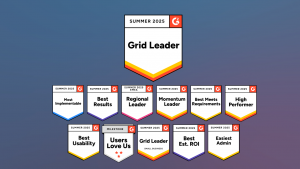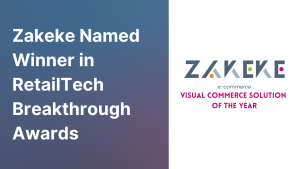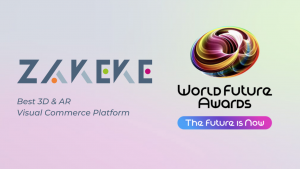In simplest terms, augmented reality, or AR, is reality enhanced with digital components. AR is a technology that layers digital information on top of the physical world to change it in some way. Instead of replacing your environment, it seamlessly digitally alters it through your AR-enabled device. This article discusses AR, including its history, what it is (and isn’t), and how AR is used today. We’ll also discuss how eCommerce companies use AR to improve online shopping experiences and customer satisfaction.
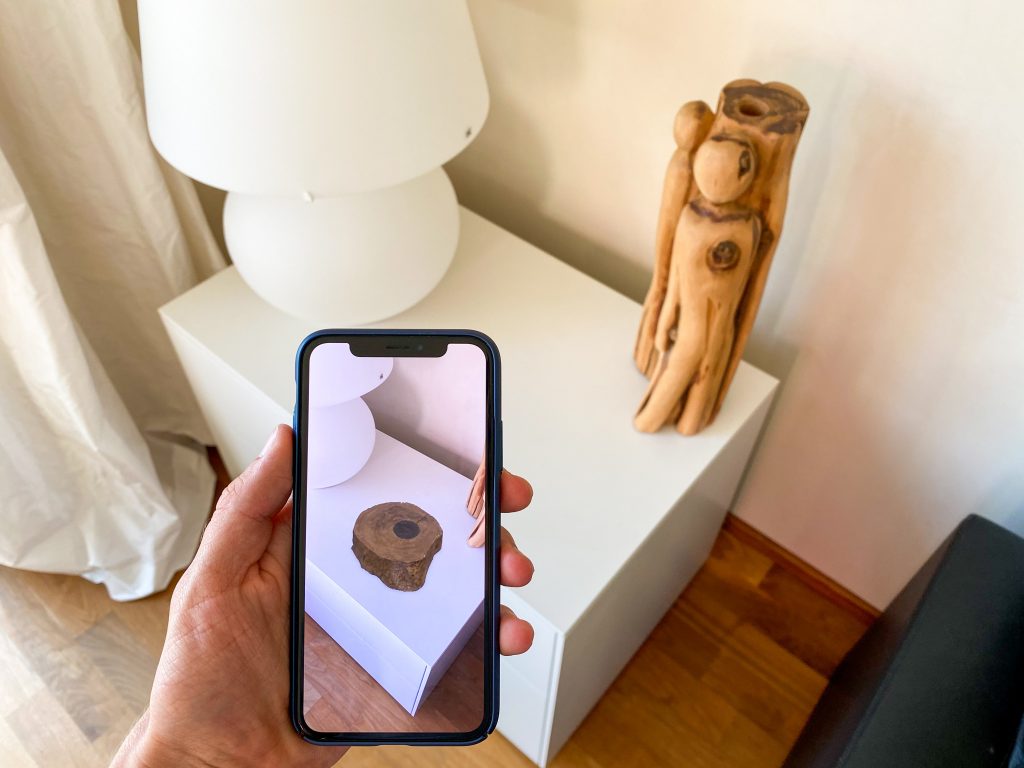
The History of Augmented Reality
The term “augmented reality” was coined by Tom Caudell in 1990 and popularized by Boeing researcher Ronald Azuma in 1997. However, the technology dates back much further than that.
The earliest known example of AR is from 1950 and the work of Morton Heilig. Heilig was a cinematographer and designed what he called the “Sensorama Simulator.” The Sensorama Simulator was a machine that allowed users to experience movies in a completely immersive way.
The machine had stereo speakers, a stereoscopic 3D display, fans, smell generators, and a vibrating chair. Heilig only built one prototype of the Sensorama Simulator, but it’s considered the first example of AR.
Other early examples of AR include:
Telespace Mask: Created in 1960, the Telespace Mask was one of the first head-mounted displays (HMDs). The mask displayed simple computer-generated images and was intended for use in teleconferencing.
Heads Up Display: In 1968, Pierre Pestieau patented the Heads Up Display (HUD). HUDs are now common in aircraft and allow pilots to see the information without looking away from their field of view.
Sword of Damocles: In 1968, computer scientist Ivan Sutherland also created an HMD called the “Sword of Damocles”. The device was so named because it was too heavy to be worn for long periods of time. The Sword of Damocles was the first AR system that allowed user interaction.
Of course, today’s AR is much more accessible and doesn’t require the machinery that older versions required. Now, AR is easily accessible with mobile phones, tablets, computers, and handheld devices.
What AR Is and What AR Isn’t
One of the most common misconceptions about AR is that it is sometimes confused with VR (virtual reality). Though sometimes used interchangeably, the two technologies are very different in both application and technologies.
What Augmented Reality Is
Augmented reality uses existing reality and physical objects in our environment to develop digital enhancements in real-time. This digital information is then layered on top of the physical world to change or improve it in some way.
For example, an everyday use of AR is to display text messages or social media notifications on top of our view of the physical world. This allows us to see the information without taking our eyes off what we’re doing. The goal of AR is to make it seem like the additions are part of the actual environment that can be interacted with.
To experience AR, users have to operate a device loaded with AR software and a built-in camera. The camera and software work together to analyze the environment and determine where to place digital enhancements. Through the technology, the enhancements can often be manipulated or engaged with somehow.
Augmented reality is used in many ways across various industries.
What Augmented Reality Isn’t
As mentioned, AR is sometimes confused with VR. Virtual reality is not a digital enhancement of a real environment. Instead, VR completely replaces the natural environment with only digital images. Through a device (like a headset), a VR experience is all-encompassing and shows its user only what the software has been programmed for the user to see. Users can engage with virtual objects in VR using controllers or movements.
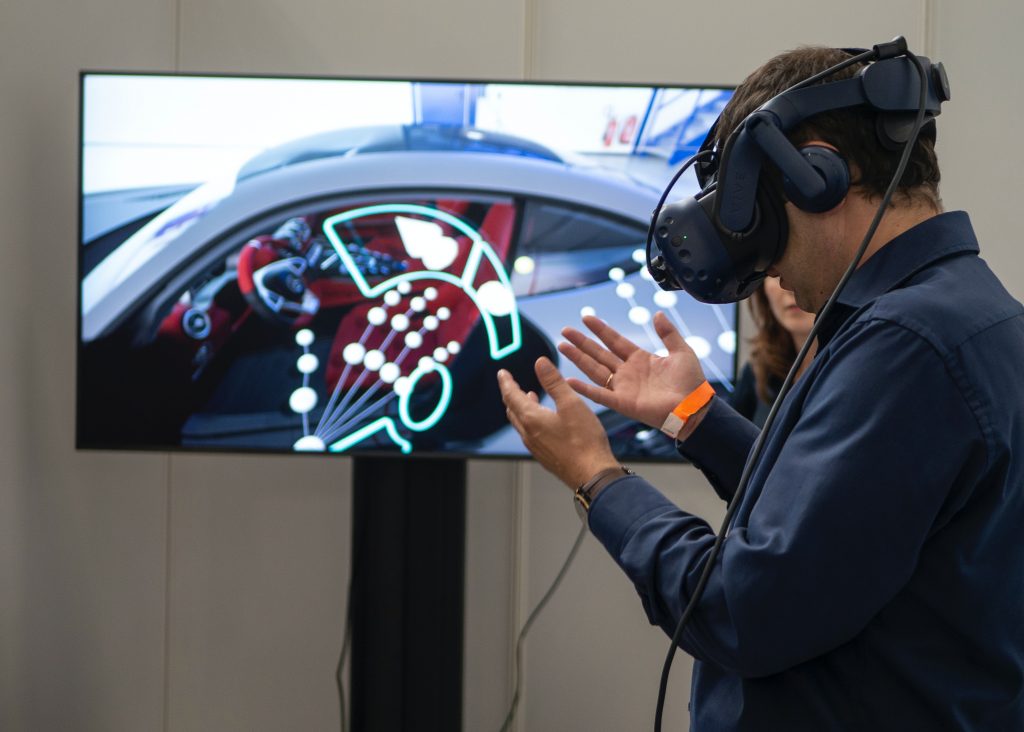
Oculus Rift, Playstation VR, HTC Vive, and others are examples of virtual reality equipment. Though it is often used for gaming, there are many other applications of VR used by many industries, including health, science, and humanities.
AR is also not 360-degree videos–though AR can use 360-degree video software to enhance the experience. 360-degree videos are also immersive, but just in the way that you can view different parts of the world by moving your phone or another device around.
Mixed reality (MR) is perhaps the closest to augmented reality. The key difference between MR and AR is that MR produces synthetic content that reacts with real-world content. Mixed reality used to be a term used more often but now augmented reality has almost completely replaced it.
How Augmented Reality is Used Today
With the technology becoming more and more popular worldwide, augmented reality can be found across many different industries, platforms, and devices. Today, many people use AR without much thought about it.
Digital Information Displays
What used to be the work of science fiction and movies, where display screens shared important information, is now found in cars and other transport vehicles. You can get real-time directions, information about accidents or upcoming road hazards, the weather, and just about anything else pertinent to your operational success directly from your dashboard.
Inserting Labels
Products utilize AR technology to make their marketing more interesting and bring to life their brands. The wine brand 19 Crimes, for example, allows users to scan their phone across a label and receive an augmented reality video of the character being displayed. The character goes into a story about their history and creates a level of intrigue that doesn’t exist anywhere else on the wine shelf.
Backs of cereal boxes also offer a full AR experience right at the breakfast table.
See The Product In Your Space or On Your Face
With some apps, furniture and home goods brands now offer the opportunity to see specific products as they would live in your space or home. While you can’t sit on a virtual couch (yet!), you can see if it matches the rest of your belongings or see how it might fit in a specific space. Warby Parker launched their AR app in 2019 as a way for customers to see how they’d look in certain eyewear. Instead of waiting for a package to arrive, only to be disappointed, users can check out firsthand whether they like the style or color they chose.
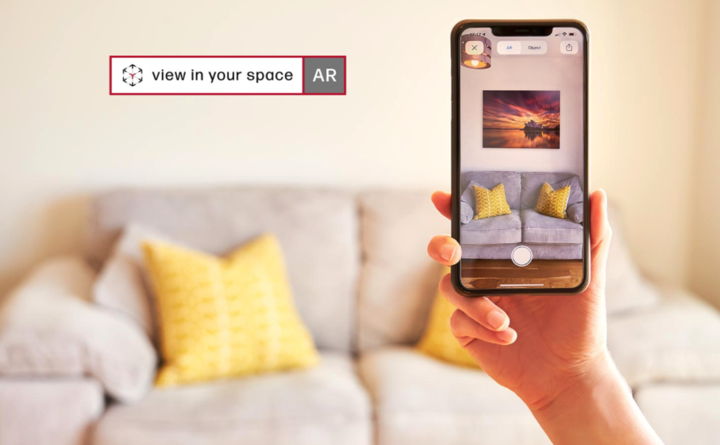
Social Media Filters
Snapchat, Instagram, and TikTok all currently use AR technology to help social media users manipulate the way they look or the space around them. Some are silly and meant to entertain, while others offer truly remarkable transformations that flow seamlessly as though part of the real world.
Augmented Reality Devices
As the technology becomes more readily available, more devices are being equipped with AR capabilities. Perhaps the most well-known devices are our smartphones.
Smartphones and Tablets
Not too long ago, getting a top-quality camera could cost upwards of several thousand dollars. Also, one had to develop certain skills to use those cameras well. Now, those high-quality cameras sit in most of our pockets and are included in our phones–and using them is as simple as touching a button. Those same cameras have made it possible for apps to seamlessly utilize AR technology and help us interact with the world around us much differently than we ever have before. Especially if you keep the device and its apps up to date.
The same can be said about tablets and other handheld devices.
Glasses and Headsets
Many people laughed when Google announced that it was developing glasses that allowed users to explore the world differently almost ten years ago. In fact, the product and its launch are considered a massive flop. But, nearly a decade later, we can see that they were simply ahead of their time, and now there are several glasses and headsets that users can get to display AR (and VR) technology.
This includes Oculus Quest 2, Magic Leap One, Raptor AR, and many others.
How Augmented Reality is Used in eCommerce
One of the drawbacks of eCommerce is the inability of customers to touch, use, and try on products as they shop. Instead, they are left with a flat image or a video showing how a product is used. And, as to how it might look on them or fit into their lives is wholly left up to their imagination. For eCommerce companies, this sometimes means dealing with costly returns and upset customers.
In fact, a study conducted by UPS estimated that 27% of consumers returned goods in 2018 because they were “not as described.”
With AR, eCommerce companies can change that. Imagine your customers knowing almost exactly what they’re getting themselves into with a new product or how a piece of furniture might fit into their home. They can see the product in action in 3D instead of a video or flat image. Taking some of the guesswork out of online shopping can reduce or eliminate the returns and make customers happier with your service and product.
If you’re in the fashion, manufacturing, furniture, jewelry, tech, or sporting goods business, this type of technology can be even more helpful for you and your eCommerce store.
Is It Popular?
According to Google, 66% of people say they are interested in using AR for help when shopping. With the pandemic accelerating the use of eCommerce to shop for goods, it makes more sense than ever for online retailers to invest in new tools and services to keep their customers interested and happy with their choices.
Also, according to Vertebrae, customer conversion rates increased by 90% for those customers engaging with AR versus those that don’t.
How to Get Started With AR in Your eCommerce Store
Many online retailers and eCommerce stores (like Shopify, Woocommerce, etc.) now offer 3D asset creation and adding AR experiences to your products, allowing customers to interact with your products through their phones and tablets.
Often, this is done through a third-party site that simply needs you to install an API key or plugin to your store. One of those options is Zakeke.
Upgrade Your eCommerce Experience With Zakeke
Zakeke uses 3D and AR technology to let customers personalize any product (clothing, promotional gifts, paper products, shoes, jewelry, watches, etc.) and visualize how they’ll look before checking out. Instead of hearing from customers that a product “didn’t look like it was supposed to.” Zakeke helps brands give customers exactly what they want before they buy it. This means fewer refunds, fewer complaints, and more 5-star reviews.
Our SaaS solutions seamlessly integrate into any e-commerce by API or plugins on Shopify, Woocommerce, Salesforce, Opencart, Etsy, Bigcommerce, etc.
Together, we can create an innovative and engaging digital product catalog that brings your products and brand to life like never before. It’s the most interactive visual experience you can get from a digital store and it’s all done in one place and through your customer’s phone or mobile device. Here you can view pricing or schedule a demo with us today.
We’re excited to show you and your customers a brand new online shopping experience.
Customer Success Stories
Want to see some of our work in action? You can view different case studies online.
For example, see how 1801&Co doubled their Etsy sales thanks to the Zakeke Product Customizer. Or how EngraveCo. used the Zakeke Visual Commerce solution to scale up their engravement offerings.
Through our solutions, Silent Pool Distillers was able to expand their product range and grow their user base through customizable labels for their products.
No matter your business, you can turn ordinary to extraordinary in seconds with Zakeke.
If you are wondering what you can do with Zakeke, check out our DEMO STORE.
Supported Platforms:
Stay up to date and follow us on LinkedIn, Facebook and Instagram




